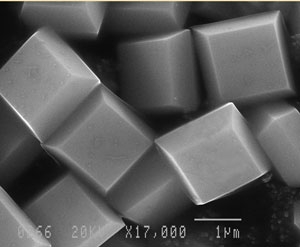Jun
3
Getting to the Best Source of Fuel
June 3, 2008 | 2 Comments
The ratio that matters, carbon to hydrogen, has a new technology for getting free hydrogen to combine with carbon to make fuels. To recap, wood has a carbon to hydrogen (C:H) ratio of 10 to 1 or wood has 10 carbon atoms for each hydrogen atom. Coal boosted the C:H ratio way up to 2 to 1. Even that isn’t really good enough and coal has failed to gain market share because oil is more superior – running at 1 to 2 for a C:H. When we look at methane or methanol the ratio gain is 1 to 4 C:H. We’ve been moving to a hydrogen enriched economy for a long time.
That ratio is the key to planning and policy for fuels. Whether digging or drilling, growing or synthesizing the basic organic chemistry is in play. The Carbon:Hydrogen ratio is the marker by which everything must be judged. Not just for the environment folks either. A methane or methanol at 1:4 would be at least six times less CO2 emitted per joule of energy released compared to gasoline or diesel. But for economics and business it matters too as forming or cracking and harvesting smaller molecules such as methane is just easier and less complex than making bigger molecules.
So far, science has relied on biology to reform carbon and hydrogen. The microorganisms that make methane, ethane, methanol and ethanol are all available and do the heavy lifting of reforming water and CO2 into hydrogen rich chemicals that can be used as fuel. But that leaves huge amounts of carbon outside of reach. In rough numbers to get a C:H of 1:4 from oil (half the carbon is wasted) or coal (7/8ths of the carbon is wasted) you need to throw away a lot of carbon, even when making light hydrocarbons like ethane or ethanol some carbon goes to waste.
What you need is a source of hydrogen. And the mates down under have a start on the solution. The technology even uses sunlight for power.
Max Lu, team leader at the University of Queensland, Australia has announced that the team has a titanium dioxide in crystal form that is five times as productive as the common titanium dioxide form known as anatase. The new form of titanium dioxide was made by adjusting the crystal structure on the surface. On crystals, these surfaces are called facets, and form in the most thermally stable configurations to mostly 6-coordinate titanium atoms. But when the Australian team interceded to limit the titanium to 5-coordinate titanium atoms on a facet the reactivity in sunlight soared.
When saturated with water and energized by sunlight the crystal matrix reacts with the water separating the hydrogen and oxygen.
By some smart programming the team simulated formations to reveal that the formation of 5-coordinate atom, layouts could be forced using dilute hydrofluoric acid, which terminates the crystal’s growth at the surface. That yields a thermodynamically stabile facet and the desired formation appears by preference. Once formed a heating drives off the remaining fluorine. To date the process is producing about 50% of the 5-coordinate crystals in the batches and crystals form at about 1 micrometer.
While not on many people’s list of things to be watching, the event has been noticed by Annabella Selloni at Princeton and Hua Chun Zeng at the National University of Singapore.
As noted above, the reality is that over time the move to hydrogen enriched carbon fuels will continue. The problem of getting freed hydrogen is the technology that needs attention as coming up with free carbon is, for some people, way too easy, now.
With biology doing the bulk of the work from sunlight right now, adding a process powered by sunlight can help a great deal. Biology, electrolysis, steam reforming and titanium dioxide splitting out hydrogen, the prospects look increasingly good for fuels for a very long time to come.
Comments
2 Comments so far




[…] to hydrogen C:H ratio of 10 to 1 or wood has 10 carbon atoms for each hydrogen atom. Coal boosthttps://newenergyandfuel.com/http:/newenergyandfuel/com/2008/06/03/getting-to-the-best-source-of-fuel…NUCLEAR POWER:File Format: Microsoft Powerpoint – View as HTMLFeb 19, 2005 … co2 > 7million mt […]
I’ve recently started a blog, the information you provide on this site has helped me tremendously. Thank you for all of your time & work.